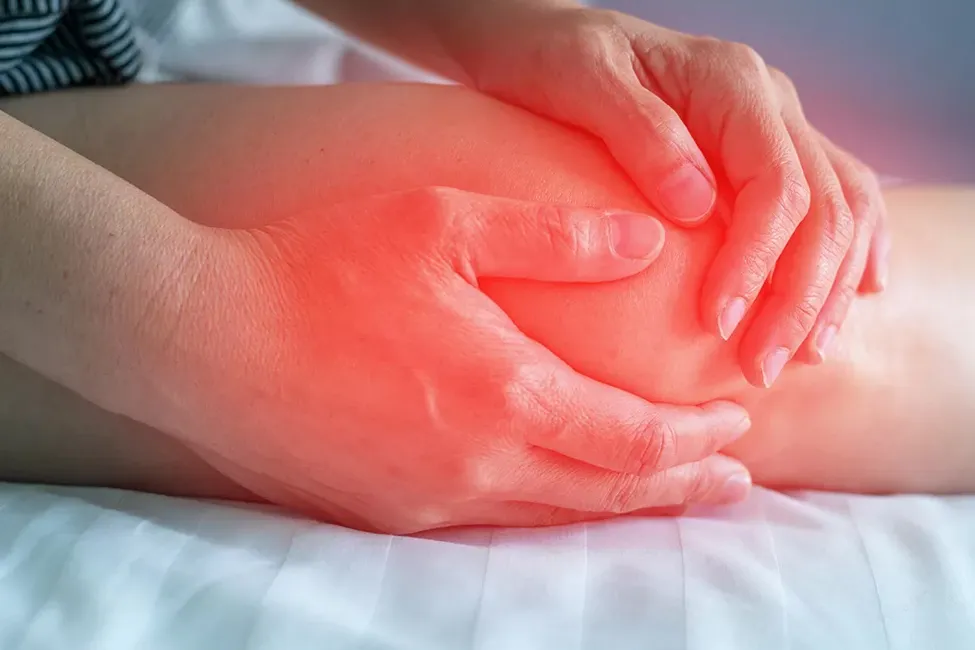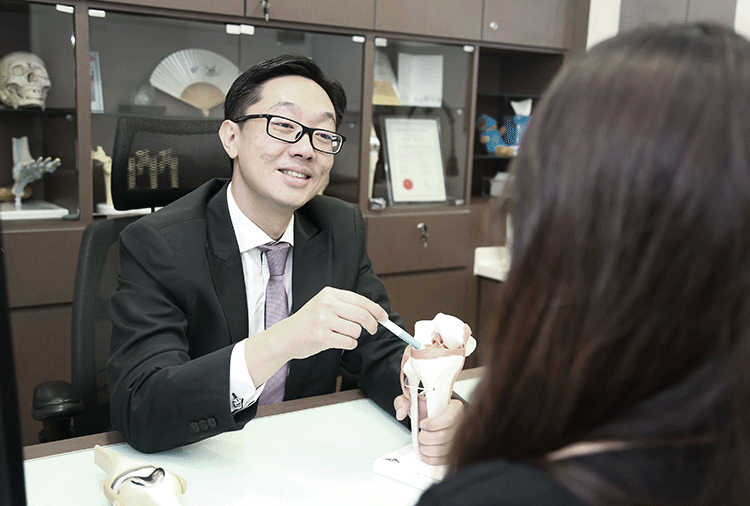Ligament tears are a common injury that can significantly impact mobility and function. Ligaments are strong bands of connective tissue that connect bones and provide stability to joints. Tears in these structures can result from sudden trauma or overuse, affecting anyone from athletes to those engaged in everyday activities.
What Is Ligament Tear, And Why Is Treatment Important?
A ligament tear occurs when one of these strong bands of tissue is stretched beyond its capacity, resulting in partial or complete rupture. This injury commonly affects the knee (e.g., ACL tears), ankle, wrist, and shoulder. Treatment is important because it helps restore joint stability, alleviate pain, and prevent further damage.
Without proper treatment, a ligament tear can lead to chronic instability, increased risk of further injuries, and long-term joint issues. Early and appropriate management, including rest, physical therapy, bracing, or surgery, is crucial for optimal recovery and return to normal activities.
What Are The Causes And Risk Factors Of Ligament Tear?
Causes
- Sudden Twisting Movements – Rapid changes in direction or twisting movements, common in sports like soccer and basketball, can cause ligament tears.
- Direct Impact – A direct blow or collision, such as in football or rugby, can result in ligament injuries.
- Overextension – Hyperextending a joint beyond its normal range of motion can stretch or tear ligaments.
- Falling – Landing awkwardly from a fall or jump can place excessive stress on ligaments.
- Improper Technique – Using incorrect techniques during physical activities can increase the risk of ligament injuries.
- Repetitive Stress – Continuous stress on a joint, often seen in repetitive sports or activities, can weaken ligaments over time.
Risk Factors:
- Sports Participation – Athletes involved in high-impact sports or activities with frequent changes in direction are at higher risk.
- Previous Injuries – A history of ligament injuries can make the ligaments more susceptible to future tears.
- Age – Ligament flexibility and strength decrease with age, increasing the risk of tears.
- Gender – Women may be more prone to certain ligament injuries due to differences in anatomy and hormonal influences.
- Physical Condition – Poor conditioning, lack of proper training, and inadequate strength in supporting muscles can elevate the risk.
- Footwear and Equipment – Using inappropriate footwear or sports equipment can contribute to the likelihood of ligament tears.
- Playing Surface – Uneven or slippery surfaces can increase the risk of ligament injuries.
What Are The Common Symptoms Of Ligament Tear?
Recognising the symptoms of a ligament tear is crucial for early diagnosis and effective treatment. Ligament tears can significantly impact mobility and joint stability, so being aware of the signs is essential for timely medical intervention.
- Pain – Severe pain at the site of the injury, which may be immediate and intense.
- Swelling – Rapid swelling around the affected joint, often within hours of the injury.
- Bruising – Discoloration and bruising around the injured area due to bleeding under the skin.
- Instability – A feeling of the joint being unstable or “giving way,” particularly during weight-bearing activities.
- Limited Range of Motion – Difficulty moving the joint fully due to pain and swelling.
- Tenderness – The area around the torn ligament is often tender to the touch.
- Popping Sound – Some people may hear or feel a popping sensation at the time of injury, indicating a ligament tear.
- Weakness – Weakness in the affected joint, making it difficult to perform normal activities.
How Is Ligament Tear Diagnosed?
Diagnosing a ligament tear involves a combination of clinical examination and diagnostic tests to accurately identify the extent of the injury and plan appropriate treatment. Early and precise diagnosis is crucial for effective recovery and prevention of further damage.
Clinical Examination
- Medical History – The doctor will begin by taking a detailed medical history, including the circumstances of the injury, symptoms experienced, and any previous injuries to the area.
- Visual Inspection – The injured area will be visually examined for signs of swelling, bruising, and deformity.
- Palpation – The doctor will feel the affected area to identify points of tenderness, swelling, and abnormalities in the ligament or surrounding structures.
- Range of Motion – The patient may be asked to move the injured joint through its range of motion to assess pain levels and functional limitations.
- Stability Tests – Specific manoeuvres and stress tests will be performed to evaluate the stability of the joint and the integrity of the ligament. For example, the Lachman test or anterior drawer test for knee ligaments.
Diagnostic Tests
- X-rays – While X-rays cannot show ligaments directly, they are useful for ruling out bone fractures or dislocations that may accompany a ligament injury.
- MRI – Magnetic Resonance Imaging (MRI) is the most effective imaging technique for diagnosing ligament tears. It provides detailed images of soft tissues, including ligaments, and can show the extent of the tear and any associated injuries.
- Ultrasound – Ultrasound imaging can be used to assess ligament injuries in real time, particularly in superficial ligaments. It helps in visualising tears and assessing the condition of the surrounding soft tissues.
- CT Scan – Computed Tomography (CT) scans are less commonly used for ligament injuries but can provide detailed images of complex joints, particularly if a bone injury is suspected.
- Arthroscopy – In some cases, a minimally invasive procedure called arthroscopy may be performed. A small camera is inserted into the joint to provide a direct view of the ligaments and other structures. This can be both diagnostic and therapeutic.
What Are The Ligament Tear Treatment Options?
Ligament tears can occur in various joints, including the knee, ankle, and shoulder, and they typically involve damage to one or more of the ligaments that stabilise the joint. The treatment approach depends on the severity of the tear, the specific ligament affected, and the individual’s overall health and activity level. Here are the primary treatment options:
Conservative Management:
- Rest – Avoid activities that stress the affected joint to prevent further damage and allow healing. Rest is crucial in the early stages of recovery.
- Ice Therapy – Applying ice packs to the injured area for 15-20 minutes several times a day can help reduce swelling and numb pain.
- Compression and Elevation – Use an elastic bandage to compress the area and elevate the limb to reduce swelling.
Medications:
- Nonsteroidal Anti-Inflammatory Drugs (NSAIDs) – Over-the-counter NSAIDs like ibuprofen or naproxen can help reduce pain and inflammation.
- Acetaminophen – Provides pain relief if NSAIDs are not suitable or if additional pain management is needed.
Physical Therapy:
- Rehabilitation Exercises – A physical therapist can design a rehabilitation program to restore strength, flexibility, and function to the affected joint. Exercises may include range-of-motion, strengthening, and stability training.
- Manual Therapy – Techniques such as joint mobilisation or massage can help alleviate pain and improve joint function.
Bracing and Support:
- Braces or Splints – Depending on the location and severity of the tear, a brace or splint can provide support and stabilise the joint during the healing process.
- Crutches or Assistive Devices – In cases of severe ligament tears, crutches or other assistive devices may be needed to avoid putting weight on the injured joint.
Injections:
- Corticosteroid Injections – Corticosteroids can be injected into the joint to reduce inflammation and pain, particularly if conservative treatments are not effective.
- Platelet-Rich Plasma (PRP) Injections – PRP therapy involves injecting a concentration of platelets from the patient’s own blood to promote healing and reduce inflammation.
Surgical Options:
- Arthroscopic Surgery – A minimally invasive procedure using small incisions and a camera to view and repair the torn ligament. This is typically considered for severe tears or when conservative treatments fail.
- Ligament Reconstruction Surgery – In cases of complete tears or significant damage, surgical reconstruction of the ligament may be necessary. This involves replacing the damaged ligament with a graft from the patient’s own body or a donor.
Alternative Therapies:
- Acupuncture – Some individuals find relief through acupuncture, which involves inserting thin needles into specific points on the body to alleviate pain and promote healing.
- Massage Therapy – Therapeutic massage can help reduce muscle tension, improve circulation, and support recovery.
Prevention Strategies For Ligament Tear
Ligament tears, or sprains, can occur in various joints throughout the body, including the knees, ankles, shoulders, and wrists. Prevention strategies for ligament tears aim to alleviate symptoms, promote healing, restore joint function, and prevent future injuries. Here are some strategies:
- Engage in regular strength training exercises to build strong muscles around the joints. Strong muscles provide better support and stability to the ligaments. Focus on exercises that target the major muscle groups supporting the joints.
- Incorporate stretching exercises into your daily routine to maintain flexibility and reduce the risk of ligament injuries. Stretching before and after physical activity helps improve range of motion and reduces muscle tension.
- Always perform a thorough warm-up before engaging in physical activity to prepare the muscles and ligaments for movement. Likewise, cool down and stretch after activity to prevent stiffness and reduce the risk of injury.
- Use proper technique and form during sports and physical activities to reduce the risk of ligament injuries. Seek guidance from a coach or trainer to ensure you are performing movements correctly.
- Wear appropriate footwear and use proper equipment for your sport or activity. Well-fitting shoes with good support can help prevent ligament injuries, particularly in the ankles and knees.
- Avoid overtraining and allow adequate rest and recovery between workouts. Overuse and repetitive strain can increase the risk of ligament injuries. Listen to your body and take breaks when needed.
- Incorporate a variety of activities into your fitness routine to promote balanced muscle development and reduce the risk of overuse injuries. Cross-training can help prevent repetitive strain on specific ligaments.
- Maintain a healthy lifestyle by eating a balanced diet, staying hydrated, getting enough sleep, and managing stress. These factors contribute to overall musculoskeletal health and reduce the risk of ligament injuries.






